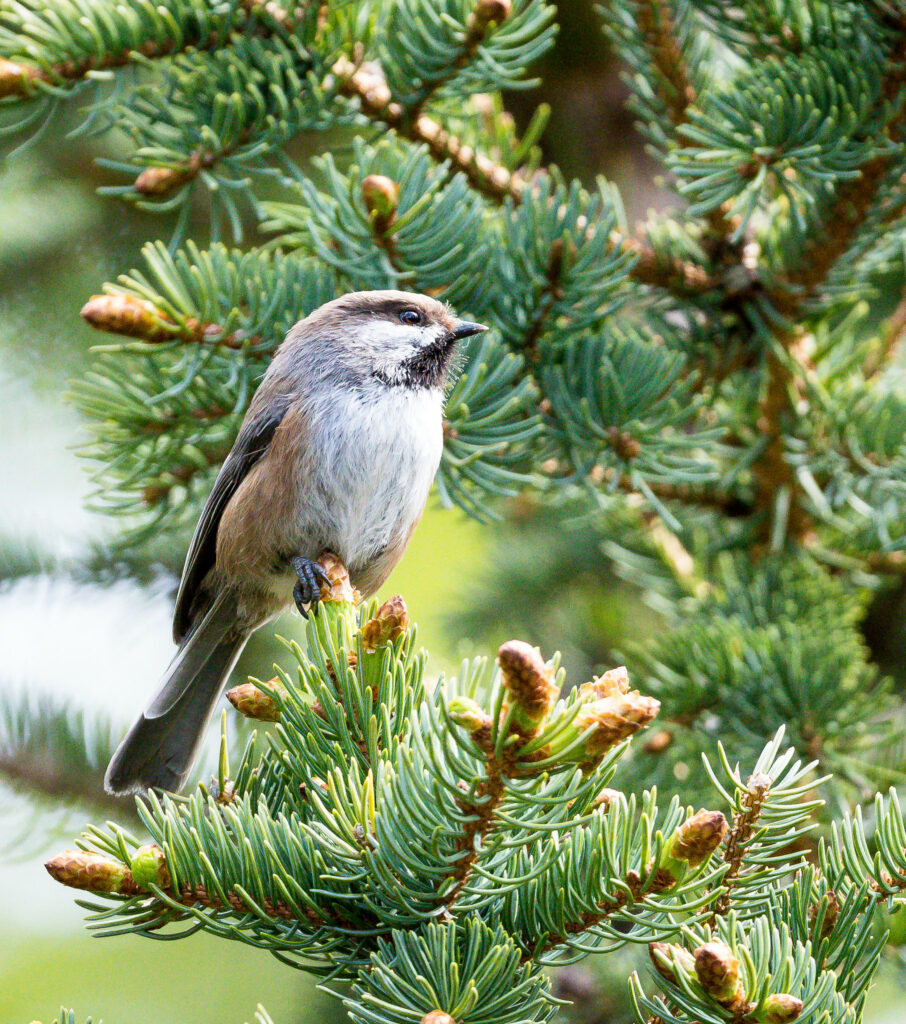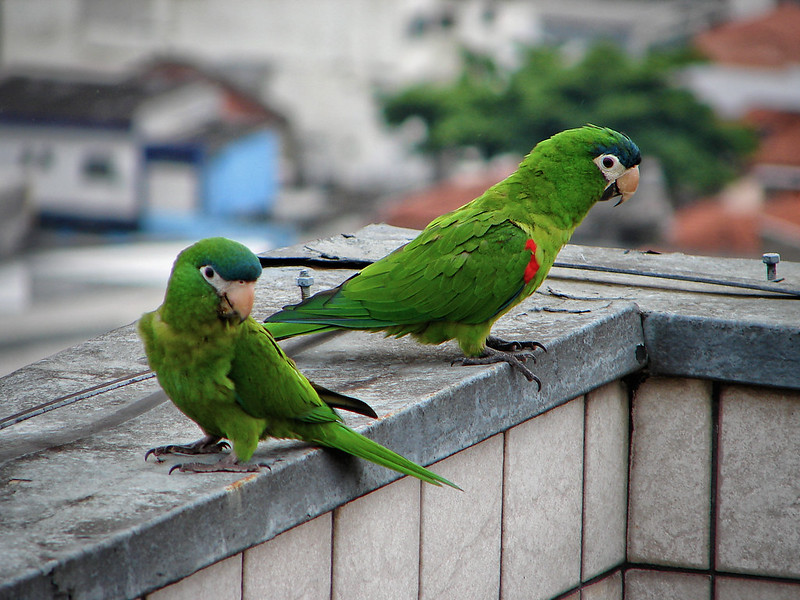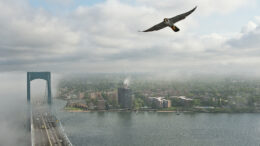Why do some bird species seem to flourish alongside humans, eating our crumbs and nesting in our backyards, while others prefer to live as far as possible from dense human populations?
Researcher Monte Neate-Clegg first began to ponder that question while attending the American Ornithological Society’s 2019 conference in Anchorage, Alaska. “I was staying at an Airbnb, and two of the birds I wanted to see in Anchorage, white-winged crossbills and boreal chickadees, were just in the yard,” says Neate-Clegg, then a Ph.D. student at the University of Utah. Although new and beautiful to him, the species are common in Anchorage — so omnipresent they’re typically ignored by residents.
“I started thinking, what is it that makes these ‘trash birds’ here, and not elsewhere?”

Neate-Clegg sounds sheepish about using the pejorative-sounding term “trash bird,” but it’s a phrase commonly used by birdwatchers to refer to species so ubiquitous at a given location that they cease to become interesting and, in fact, can become downright irritating. Classic examples include pigeons in city centers and snack-stealing gulls on beaches.
But one man’s trash bird is another’s research query. Neate-Clegg wondered if specific traits make certain species more able to thrive in cities around the world. And after joining ornithologist Morgan Tingley’s lab at UCLA as a postdoctoral researcher in 2021, he proposed a lab-wide project to try to answer his question.
Their research drew on big data to provide some clues — and may even reveal a roadmap for making our cities more bird-friendly.
What Makes a City Bird?
To look at shared traits among urban birds on a global scale, Neate-Clegg and his collaborators turned to several massive datasets. First, to determine which species preferred city habitats and which avoided them, they downloaded the entire database of sightings submitted to eBird, the popular online platform where amateur birdwatchers around the world can upload their observations. “It’s basically like an Excel sheet with more than a billion rows,” says Neate-Clegg.
For their analysis of the characteristics these birds had in common, they then drew from other databases, including a new one called AVONET. Published in 2022, AVONET includes physical measurements (wing length, beak length, etc.) for all the world’s 11,000-plus bird species. Neate-Clegg himself contributed to the project as a research assistant, painstakingly measuring thousands of bird specimens preserved in natural history museums.
Ultimately the members of the Tingley lab examined traits underlying the urban tolerance for 3,768 bird species in 137 cities. They found that urban-tolerant birds tend to be smaller, less territorial, longer-lived, and less picky about their diets and habitats than other species. They also have greater dispersal ability — they move more easily from one place to another — and lay larger clutches of eggs.

Neate-Clegg was particularly surprised by the link with longevity. Longer-lived birds tend to be large, so the association between small size and urban tolerance seemed to be contradictory. But “long-lived species are, on average, more intelligent,” he says. “Previous studies have found that birds with larger relative brain sizes are more urban tolerant, so it’s possible that lifespan is a proxy for intelligence, which helps [birds survive] in urban areas.”
Although the study, published in the journal Current Biology in April 2023, is not the first to look at characteristics of so-called trash birds, it’s the first to examine these patterns for so many traits on such a massive scale.
Not every trait examined was equally significant everywhere in the world: For example, being a diet generalist was more important in temperate regions, while being a habitat generalist was more important in the tropics.
Helping More Birds Survive
Kylie Soanes, a research fellow at Australia’s University of Melbourne and an expert in urban biodiversity who was not involved in the Tingley lab study, hopes that this won’t be seen as the last word on which species are capable of persisting in cities, but rather as a starting point for considering ways in which we could make cities more hospitable for a broader suite of birds.
“Do we need to provide more diverse food or shelter sites? Where can we make some areas safer for ground nesters? How can we make cities safer to move through?” asks Soanes. “A lot of these negative associations between species traits and cities can be ameliorated, and that’s where we should turn our focus for conservation action.”
Soane’s own research has identified a surprising range of threatened species living in Australia’s cities, including 39 found only in urban areas. They are mostly orchids and other plants, but also a critically endangered tortoise.
Concrete jungles may not be as good for wildlife as native habitat, but this growing field of research shows that cities still play a critical role for many species. And this is important to keep in mind as urban areas expand around the planet.
“There’s an enormous range of things that we can do to improve urban living for native wildlife,” Soane says, such as preserving habitat corridors to make dispersal easier or increasing plantings of native plant species to support birds with specific habitat and diet needs. “We need to make sure we don’t relegate [these possibilities] to the ‘too hard’ basket.”
In other words: Let’s make more birds, and more diverse birds, into “trash” birds. And while we’re at it, let’s drop the “trash” label altogether. City birds — adaptable, prolific and smart — deserve our respect. And our conservation attention.
![]()


